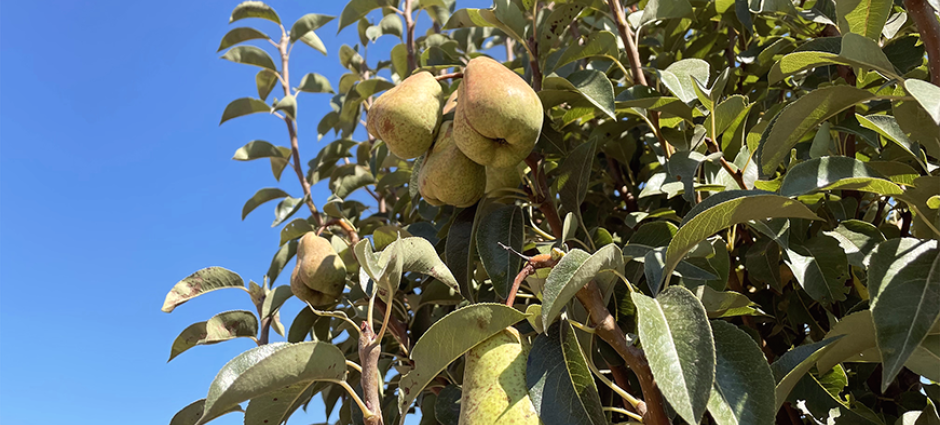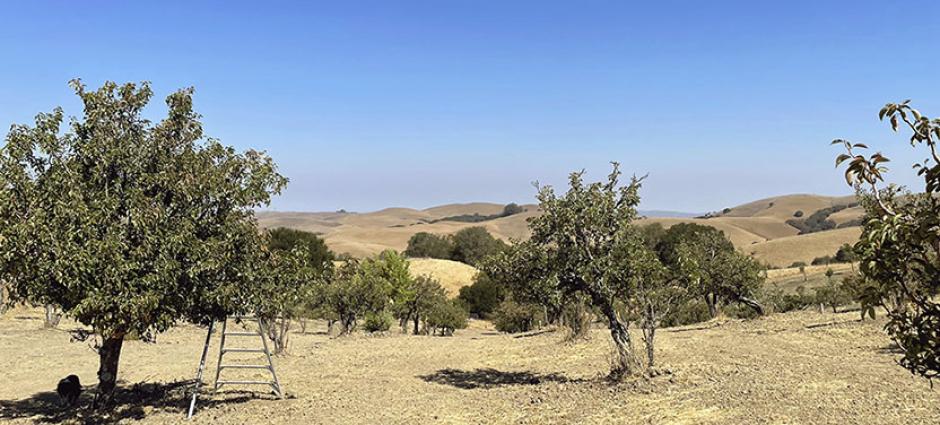Drought Shortens Season for Alhambra Valley Pears & Beef
The sky begins to lighten as the sun rises over the rolling hills above Martinez, filtering light through the pear trees. It’s going to be another hot dry day at Alhambra Valley Pears & Beef, a farm nestled in the beautiful Alhambra Valley/Briones Valley Agricultural Preserve near Martinez.
It’s quite an enchanting rural area to live and farm in! The valley is surrounded by hills covered in stately old valley oaks and scrub. The French Butter pear trees were planted in 1919, followed by the planting of Bartlett pear trees in 1930. Today, Alhambra Valley Pears & Beef is made up of two neighboring ranches that came together in 1941 when Emma Sindicich married Edward Pereira - pear orchards and a cattle ranch.
On the surface, everything seems calm and peaceful in the early morning light, the pear trees gleaming in the sun, the cattle quietly grazing on the hillside. But the Pereiras are concerned about how to get enough water to their pear orchards. They’re anxious about whether there’s enough grass to feed the cattle and whether there’s enough drinking water for them.
They live near the Alhambra Valley Creek but it hasn’t flowed with water in over two years. They’re now using their dwindling well water, which is running low because the groundwater is not being replenished.
The hills and orchards are dry and brown now. The soil is parched and dusty. But they have over 500 pear trees, some over 80 years old that need water. These old trees are still producing, but the drought has shortened the growing season. Even though their dry-land farm technique is an example of their respect for the land and without water waste, they’re hard-pressed to get enough water to the trees.
Darryl Pereira says, “This year has been a difficult one. In a normal year during peak season, we harvest about 600 boxes of pears. This year it’s 25% of that, and the season is shortened, too, to only 4 or 5 weeks.” During a normal year with plenty of rain, they can harvest and sell pears through the end of October. This year, they finished bringing pears to the farmers’ market in mid-September.
He also says, “There were two bad drought years in the 1970s where the orchard saw less than 10 inches of rain. But the trees are much older now, and can't handle the stress of no water as well as they used to.”
The Pereiras hope for plentiful rainfall this winter, anticipating a larger crop next season. They brought to the farmers’ market what pears they could harvest this season and hope for a wetter year next season, as they struggle to preserve their century-old family farm.
Small farms like Alhambra Valley don’t have the resources that larger farms have during a crisis such as this so please support them at your local farmers’ market.

